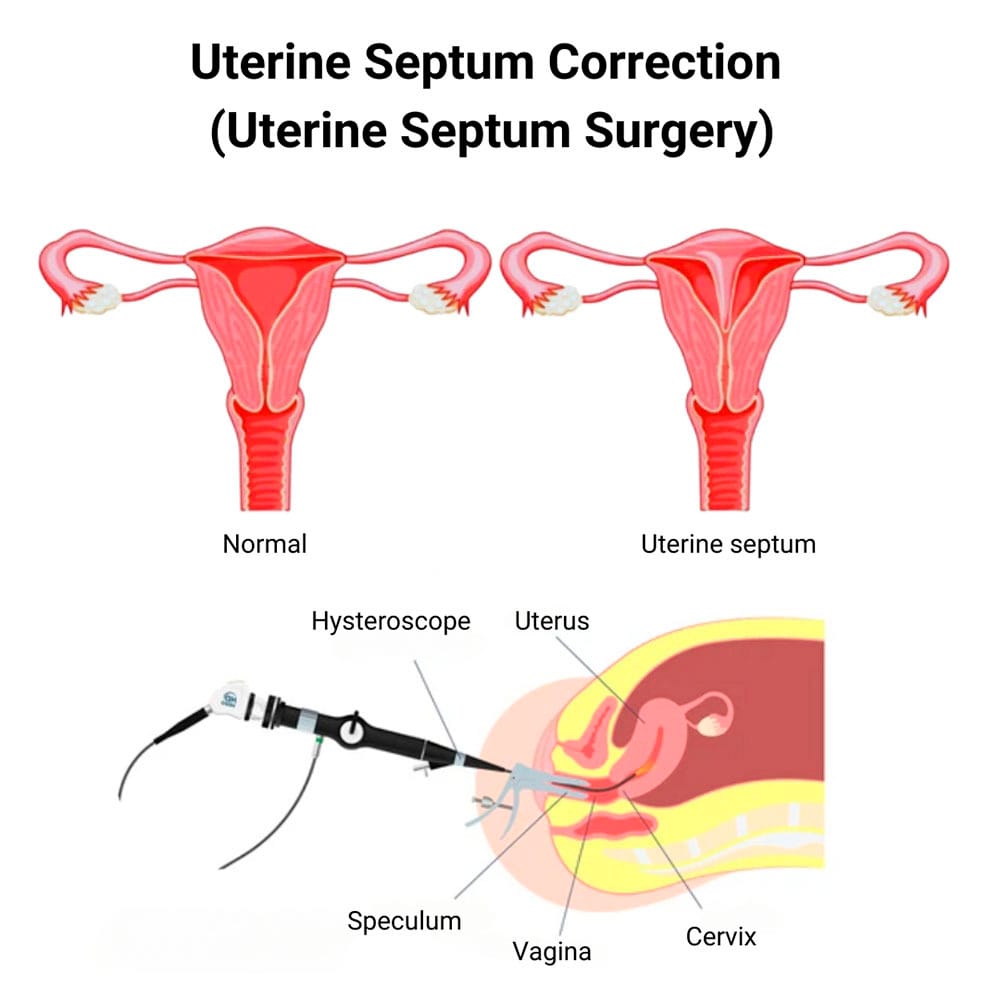What Is a Septate Uterus?
 A septate uterus is a congenital abnormality in which a membrane runs down the middle of your uterus. This membrane is called the septum, and it divides the uterus into two parts. The length and thickness of the septum can vary, and it may be complete or partial. In rare cases, the septum can also divide the endocervical canal. It may also be associated with a longitudinal vaginal septum, which is a vaginal septum that runs from top to bottom.
A septate uterus is a congenital abnormality in which a membrane runs down the middle of your uterus. This membrane is called the septum, and it divides the uterus into two parts. The length and thickness of the septum can vary, and it may be complete or partial. In rare cases, the septum can also divide the endocervical canal. It may also be associated with a longitudinal vaginal septum, which is a vaginal septum that runs from top to bottom.
Dr. Felix Cohen is a best gynecologist in Midtown, NYC and the founder and director of Cohen Medical Practice (CMP). He’s experienced in providing correction of vaginal and uterine septum as well as exceptional female health care for everything from birth control to your annual gynecological exam.
Dr. Cohen and his team offer knowledgeable and expert diagnoses and treatment for a septate uterus or other conditions, such as:
- Pelvic inflammatory disease
- Interstitial cystitis
- Uterine fibroids
- PMS
- Abnormal bleeding
- Fertility issues
How Do I Know if I Have a Septate Uterus?
Women with a septate uterus are usually unaware that they have a congenital abnormality unless they find it difficult to get pregnant.
Signs you could have a septate uterus include:
- Multiple miscarriages
- Decreased fertility
- Pelvic pain
- Painful periods
If the septate uterus extends to the vagina or if you have a separate condition called a vaginal septum, your doctor may find it during a pelvic exam.
Other symptoms you may experience if you have a vaginal septum include:
- Amenorrhea, which is the absence of a menstrual period
- Abdominal and unexplained pelvic pain
- Pain during sex
- Discomfort inserting or removing a tampon
- Difficulty getting pregnant
Both a septate uterus and a vaginal septum are congenital disorders, which means they’re something you’re born with. It’s not known what causes this to happen. While the fetus is forming, two ducts typically fuse together, but if they fail to fuse properly, a tissue membrane is created.
How Is a Septate Uterus Diagnosed and Treated?
Your CMP gynecologist may suspect a septate uterus if you have experienced more than one pregnancy loss or if you’re unable to get pregnant.
If the uterine septum doesn’t extend into the vagina, the septum can’t be felt during a pelvic exam and imaging tests may be ordered, including:
- Magnetic resonance imaging (MRI)
- Ultrasound
- Hysteroscopy, which is a procedure that allows your doctor to see inside your uterus
You may not need treatment for a septate uterus or a vaginal septum if you’re not experiencing symptoms and if this congenital anomaly isn’t impacting your life. If you’re having difficulty getting pregnant or staying pregnant or if you’re experiencing pain, amenorrhea or other symptoms that may be caused by this condition, your doctor may recommend correction of vaginal and uterine septum, which is done surgically.
What Happens During Uterine Septate Surgery?
The most commonly used surgical uterine septum correction is called hysteroscopic metroplasty. It’s a minimally invasive procedure that’s performed in a hospital or surgical center.
Steps of the procedure include:
- General anesthesia is administered.
- Your cervix is dilated.
- A tool called a hysteroscope, which is a thin long instrument with a lighted camera, is inserted into your uterus.
- The band of tissue is removed using a laser, electrosurgery or micro-scissors.
Surgical correction of vaginal and uterine septum takes one to three hours. You should be able to go home the same day, but plan to have someone drive you home.
What Can I Expect after Uterine Septum Surgery?
Recovery time after a uterine septum surgery varies based on the length and complexity of your individual procedure.
Some of the things you may experience after this procedure include:
- Light spotting for up to a week
- Abdominal discomfort
- Difficulty sitting down
Most women can return to work after a couple of days, but full recovery can take between two and four weeks. Your doctor provides instructions about how long you should abstain from sex or using tampons. Be sure to follow all instructions provided by your doctor and attend follow-up appointments.
After having this procedure, the uterus is better prepared to support a pregnancy and your risk of having a miscarriage decreases. Most doctors recommend waiting at least two months before trying to get pregnant.
What Are the Risks of Uterine Septum Surgery?
The use of a hysteroscope to do uterine septum surgery means there’s no abdominal scarring, but all surgical procedures involve some risk. These are drastically mitigated, however, when you rely on the experience and expertise of CMP doctors.
Symptoms you should report to your doctor right away if you experience them after uterine septum correction include fever, chills, nausea and vomiting. When you trust your care to Dr. Cohen for this procedure or any other gynecological procedure, the chance of complications is greatly reduced.
For expert and compassionate gynecological care, including routine OB GYN services and both surgical and nonsurgical treatment options for conditions of the female reproductive system, contact Cohen Medical Practice (CMP) today.

